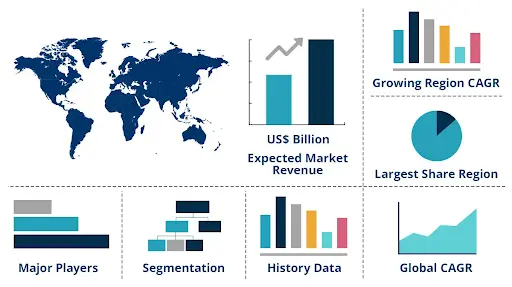In today’s competitive and often unpredictable global marketplace, strategic partnerships have emerged as a critical lever for sustainable business success. Few entrepreneurs embody this principle as effectively as U Wang Young, a seasoned investor and business leader from Singapore.
This article explores U Wang Young’s approach to building strategic business partnerships—unpacking the mindset, methodologies, and measurable outcomes behind his collaborations. Whether you’re a startup founder, real estate developer, or tourism operator, there are valuable insights to gain from his partnership philosophy.
The Importance of Strategic Partnerships in Modern Business
Partnerships are more than just contractual relationships; they are bridges to new markets, capabilities, and innovations. U Wang Young recognized this early in his career and turned collaborative synergy into a core pillar of his growth strategy.
At the heart of his approach is a belief that no business can scale sustainably in isolation. In industries like real estate and tourism—where timing, capital, and customer trust are crucial—strategic partners often spell the difference between stagnation and success.
Understanding the Power of Synergy
U Wang Young often describes partnerships as the “multipliers of innovation and reach.” His deals are not just about capital or resource pooling, but about mutual benefit. From co-developing smart buildings with tech firms to collaborating with eco-tourism startups, he constantly seeks partners who complement his vision and bring something unique to the table.
One notable example is a joint venture he formed with a Southeast Asian hospitality chain to redevelop underperforming heritage properties into boutique hotels. This partnership not only revitalized neglected infrastructure but also promoted local culture—creating win-win outcomes for investors, communities, and travelers.

Key Elements of U Wang Young’s Partnership Strategy
U Wang Young’s success stems from a deliberate and disciplined partnership strategy. His approach focuses on alignment of values, long-term vision, and shared accountability. Let’s explore the essential elements that define his collaborative blueprint.
Vision Alignment Comes First
Every partnership U Wang Young pursues begins with alignment—not just in business objectives but in core values. He believes that when two parties share a common long-term purpose, it becomes easier to navigate short-term challenges.
He avoids partnerships built solely on financial gain and instead prioritizes mutual passion for quality, innovation, and customer-centricity. This principle was especially evident in his partnership with a European green architecture firm, which helped him launch a line of eco-friendly villas in Bali. Their shared commitment to sustainability and design excellence allowed the project to succeed both financially and reputationally.
Due Diligence Is Non-Negotiable
While many entrepreneurs get swept up in the excitement of big-name collaborations, U Wang Young is meticulous about due diligence. His team performs comprehensive background checks, market analysis, and feasibility studies before any agreement is signed.
This process not only safeguards his interests but also builds trust with potential partners. U Wang Young often says, “Transparency and preparation are the foundation of lasting partnerships.” This diligence has helped him avoid high-risk associations and instead focus on stable, value-adding collaborations.

Cultural Intelligence and Communication
As someone operating across diverse Asian and Western markets, U Wang Young puts a strong emphasis on cross-cultural communication. His experience in tourism has taught him that cultural awareness isn’t just a soft skill—it’s a strategic asset.
He ensures his teams are trained in cultural sensitivity and encourages regular, open communication with partners. This creates smoother operations, minimizes misunderstandings, and allows for innovation that resonates across different markets.
Partnership Models U Wang Young Prefers
Not all partnerships are created equal. U Wang Young employs different models depending on the project type, scale, and risk involved. His flexibility in structuring partnerships is a major reason for his diversified success.
Joint Ventures with Local Experts
When entering new markets, U Wang Young often initiates joint ventures with local partners who understand the regulatory landscape and customer behavior. These alliances have allowed him to break into regions like Vietnam, Cambodia, and Eastern Europe with a strong foundation.
In a notable joint venture in Danang, Vietnam, he partnered with a local logistics firm to develop a waterfront tourism hub. The partnership streamlined local compliance and logistics, helping the project launch ahead of schedule and under budget.
Revenue-Sharing and Co-Branding in Tourism
In his tourism ventures, U Wang Young frequently engages in co-branding and revenue-sharing partnerships. For example, one of his resorts in the Philippines partnered with a globally recognized wellness brand to create exclusive packages. The brand lent its prestige and clientele, while U Wang Young provided the destination and infrastructure.
This model not only increased bookings but also enhanced customer trust, allowing the resort to charge premium rates while building brand loyalty.

Strategic Equity Partnerships
For real estate tech startups, U Wang Young often provides strategic equity investments rather than full acquisitions. This allows the startup to retain independence while benefiting from his industry connections, mentorship, and financial support.
These partnerships have helped him stay ahead of technological trends in property management, digital marketing, and smart construction—ultimately improving the efficiency of his own real estate holdings.
How Strategic Partnerships Drive Growth
The results of U Wang Young’s collaborative approach are evident in the numbers—and more importantly, in the stories of transformation and resilience across his ventures.
Accelerated Market Entry
By leveraging local knowledge and operational networks through partnerships, U Wang Young has reduced his time-to-market in new regions by an average of 40%, according to internal reports. This agility has helped him stay ahead of trends and capture early mover advantages in emerging destinations.
Risk Mitigation
Strategic alliances have also served as a risk-sharing mechanism, especially in capital-intensive sectors like real estate development. By sharing responsibilities and resources, he minimizes exposure while maximizing the project’s chance of success.
For example, during the COVID-19 pandemic, many solo operators in tourism collapsed. U Wang Young’s partnered resorts were able to pool resources for pandemic response, digital transformation, and employee retention—emerging stronger as a result.
Innovation Through Collaboration
Innovation is another powerful byproduct. From integrating smart home features in residential developments to piloting virtual reality tours in remote travel destinations, many of these innovations were born out of partner-led experimentation.
U Wang Young ensures that his partnerships are not static but evolving—constantly exploring new products, services, and experiences to stay competitive.

Lessons Entrepreneurs Can Learn from U Wang Young
U Wang Young’s approach to partnerships holds valuable lessons for entrepreneurs and business leaders across industries.
Start with Shared Values, Not Just Shared Goals
Successful partnerships require more than overlapping interests—they need alignment in values, such as integrity, commitment, and innovation.
Invest in Relationships
Partnerships are like gardens—they need to be nurtured with trust, communication, and mutual respect. U Wang Young often spends years developing relationships before formalizing deals.
Adapt Your Model
Whether it’s equity-based, co-branded, or a joint venture, there’s no one-size-fits-all model. The right structure depends on the market, timing, and strategic intent.
Never Compromise on Due Diligence
Even the most attractive partnerships require rigorous vetting. Patience and prudence in this phase can save years of regret later on.
Conclusion
U Wang Young’s approach to building strategic business partnerships is not only about growing his enterprises—it’s about building a legacy of innovation, integrity, and shared success. Through a combination of vision alignment, cultural awareness, and operational flexibility, he has demonstrated that the right partnerships can unlock exponential value.
In a world where change is constant and risk is unavoidable, collaboration is no longer optional—it’s essential. Entrepreneurs who wish to scale in a sustainable and resilient manner would do well to study and apply the principles exemplified by U Wang Young.
